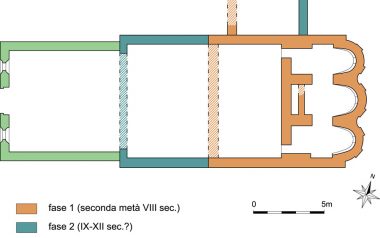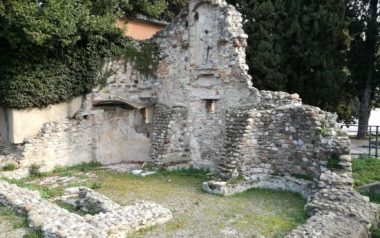San Salvatore monastery
Founded at the behest of Ansa, wife of the last Longobard king Desiderio and directly connected to the monastery of San Salvatore (later S. Giulia) of Brescia.
San Salvatore monastery, it was built on an area where there were huts and houses, at the foot of the hill of Cortine and inside the castrum of Sirmione. It is mentioned for the first time in a document of Charlemagne of 774, in which the “monasteriolo” is donated to the monastery of Saint-Denis; it seems to have been named after the homonymous monastery of Brescia and its foundation should be between 760 and 772; it will remain under the influence of the Brescian monastery from the Lombard period until the fifteenth century, when it was alienated with its many properties.
With the fall of King Desiderius and the Lombards by the hand of Charlemagne, the policy of centralization of the Carolingians leads to the downgrading of many minor districts, with the concentration of the main jurisdictions in the hands of the monks of Tours, including that of Sirmione.
In the sixteenth century San Salvatore monastery was very compromised and threatened the demolition, but in 1686 it was restored instead. In the mid-nineteenth century Count Giovanni Girolamo Orti Manara made a careful study, minutely describing the underground crypt with altar and sepulchres. At the beginning of the twentieth century the area was an agricultural destination and, even if the crypt still existed, the owners of the area destroyed almost everything; after a few years public gardens were built, with the stripping of the entire area and the removal of a considerable amount of land, with the consequent removal of the floors of the atrium, the nave, the crypt itself and the sepulchres. Only in 1959 the Archaeological Superintendency restored what was left, restoring the original appearance and eliminating the changes made during the restoration of 1686; with these works the frescoes of the crypt came to light.
historical sources: G.P.Brogiolo


